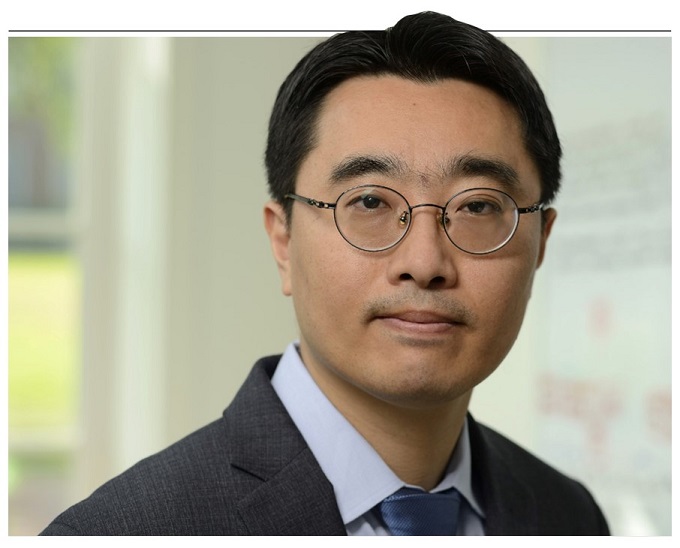
Bioinspired self-adaptable materials and architected materials for adaptive energy absorption
Sung Hoon Kang, Professor
Department of Mechanical Engineering, Johns Hopkins University
In my presentation, I will first briefly introduce research projects in my group and focus on two studies about how we can synthesize materials that can adapt to loading conditions by changing their mechanical properties and/or repair damages.
Nature produces outstanding materials for structural applications such as bones and woods that can adapt to their surrounding environment. For instance, bone regulates mineral quantity proportional to the amount of stress. It becomes stronger in locations subjected to the higher mechanical loads. This leads to the formation of mechanically efficient structures for optimal biomechanical and energy-efficient performance. However, it has been a challenge for synthetic materials to change and adapt their structures and properties to address the changes of loading conditions. To address the challenge, we are inspired by the findings that bones are formed by mineralization of ions from blood onto scaffolds. I will present a material system that triggers mineral synthesis from ionic solutions on organic scaffolds upon mechanical loadings and/or damages so that it can self-adapt to mechanical loadings and regenerate upon damages. For example, we observed ~30% increase in the modulus of the material upon periodic loadings for 3 days. We also observed that the material could self-repair damages generated by removing ~5 μm thick minerals from the matrix, in 7 days. We envision that our findings can open new strategies for making synthetic materials with self-adaptable mechanical properties and self-repair capability.
An architected material (or metamaterial) is a class of materials that provide new properties that are not observed in natural materials and/or from a bulk material that the “material” is made of. I will present adaptive energy-absorbing “materials” with extreme energy dissipation and improved energy absorption with increasing strain rate. We utilize energy dissipation mechanisms across different length scales to maximize energy dissipation by utilizing architected liquid crystalline elastomers (LCEs). As a result, our energy-absorbing material shows about order of magnitude higher specific energy dissipation at quasistatic condition compared with the previous studies and even higher energy dissipation at faster strain rates with power-law relation, whose exponent can be tuned by controlling the mesoscale alignment of molecules using a simple strain control-based approach. The findings from our study can contribute to realizing extremely lightweight and high energy dissipating materials, which will be beneficial for various applications including aerospace, automotive, and personal protection.
About the Speaker
Sung Hoon Kang is an Assistant Professor in the Department of Mechanical Engineering since January 2015 and is an associate faculty of Hopkins Extreme Materials Institute and Institute for NanoBioTechnology. He earned a Ph.D. degree in Applied Physics at Harvard University and M.S. and B.S. degrees in Materials Science and Engineering from MIT and Seoul National University, respectively. Sung Hoon has been investigating bioinspired solutions to address current challenges in synthetic materials and mechanical systems with applications including healthcare, safety, and energy. Throughout his career, Sung Hoon has co-authored 36 peer-reviewed papers, has given over 80 presentations (including ~50 invited talks), and has two patents and three pending patents. His honors include FY 2018 Air Force Office of Scientific Research Young Investigator Program Award, Alumnus of 2016 National Academy of Engineering US Frontiers of Engineering Symposium, and 2011 Materials Research Society Graduate Students Gold Award. He served as an editorial board member of Scientific Reports (Nov. 2014 – Oct. 2017) and a guest editor of February 2016 issue of Materials Research Society Bulletin. He has been co-organizing ~20 symposia on bioinspired materials, 3D printing, and mechanical metamaterials at international conferences. He is a member of Materials Research Society (MRS), American Society of Mechanical Engineers (ASME), American Physical Society (APS), and Society of Engineering Science (SES). He serves as the Vice Chair of ASME Technical Committee on Mechanics of Soft Materials and will serve as Chair in 2020.
Date/Time:
Date(s) - Apr 19, 2019
10:30 am - 12:00 pm
Location:
2101 Engineering V
420 Westwood Plaza Los Angeles CA 90095
